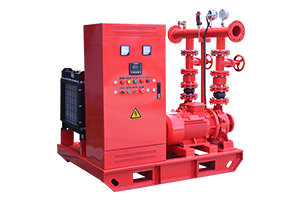How to Identify Fire Pump Cavitation Symptoms?
Dec 02, 2024
Share:
Fire pump cavitation occurs when the pump is not receiving enough water or the pressure at the pump's suction is too low. Identifying cavitation early is crucial to prevent damage to the pump and maintain its performance. Here are the key symptoms to look out for:

1. Unusual Noise
- Cavitation often causes a distinctive noise, commonly described as "gravel" or "marbles" rattling inside the pump. This is caused by vapor bubbles collapsing near the impeller.
2. Vibration
- Excessive vibration in the pump or piping can indicate cavitation. This happens due to the uneven forces created by the collapsing bubbles.
3. Reduced Pump Performance
- Look for a decrease in flow rate or pressure. Cavitation reduces the pump's efficiency and can lead to an inability to meet system demands.
4. Damage to Pump Components
- Inspect the impeller and other internal components for pitting or erosion. This is a physical sign of cavitation over time.
5. Increased Energy Consumption
- Cavitation causes the pump to work harder, which can result in higher energy usage.
6. Overheating
- If the pump gets unusually hot, it might be because the flow is being disrupted by cavitation.
Causes of Cavitation
Understanding the root causes can help in diagnosing the problem:
- Low suction pressure: Could be due to a clogged strainer, inadequate water supply, or a high vertical lift.
- Excessive pump speed: Operating the pump beyond its designed speed increases the risk of cavitation.
- High fluid temperature: Warm water reduces its vapor pressure, making cavitation more likely.
How to Prevent Cavitation
- Ensure the Net Positive Suction Head Available (NPSHa) exceeds the Net Positive Suction Head Required (NPSHr).
- Keep suction lines clean and unobstructed.
- Reduce pump speed if possible.
- Maintain a sufficient water supply to the pump.
- Minimize bends or restrictions in the suction piping.
Regular inspection and maintenance are key to detecting and addressing cavitation symptoms early.






